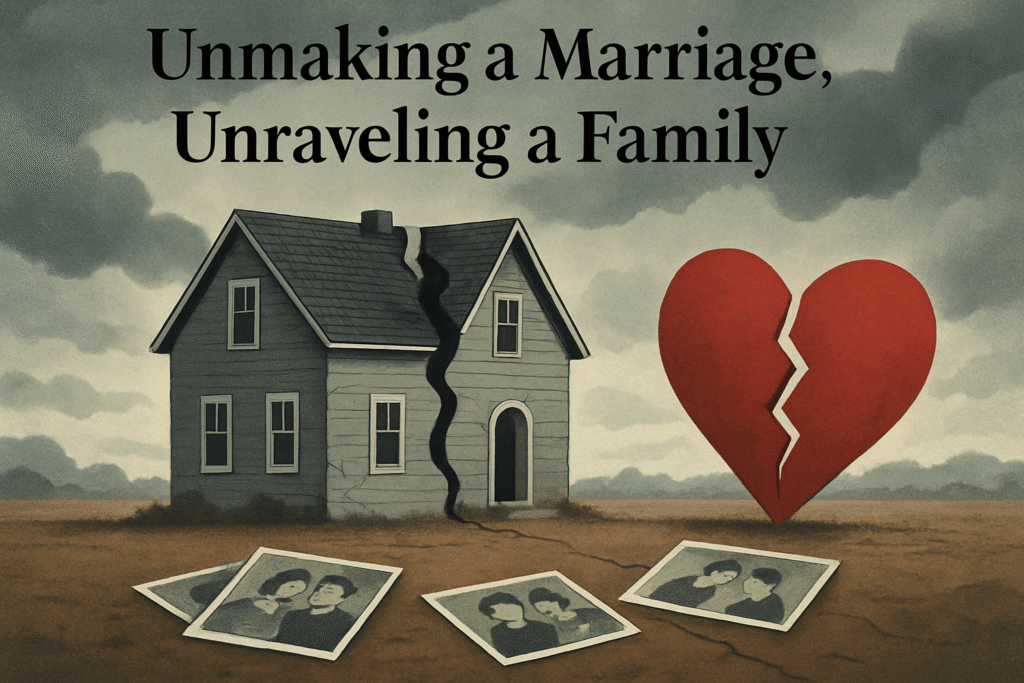Published On: 25th March, 2024
Authored By: Somya Mehta
M.K.E.S College of Law
ABSTRACT
To protect women from all forms of violence, nations, including India, have ratified the 1948 Universal Declaration of Human Rights and the Convention on the Elimination of All Forms of Discrimination. India adopted numerous human rights from these treaties for their constitution, including the freedom of expression, the right to life, the right to equality, the right to marriage, the prohibition against sex-based discrimination by the state, etc.
Violence is the major problem of the world which affects the human rights of a woman. It also impacts the mental health of women.
One of the major categories of violence is domestic violence. Domestic violence is also called “domestic abuse” or “intimate partner violence.” It means a pattern of behaviour in any relationship used to gain or maintain power and control over an intimate partner. Domestic abuse, financial abuse, sexual abuse, and physical violence are all included. The NCW has reported that since lockdown, there has been an increase in domestic violence cases. Women are the victims and males are the abusers in the majority of cases of domestic violence.
The Constitution of India and the legislature have given various laws and protections to women; still, they face domestic violence.
So the researcher wants to study the concept of domestic violence against women in India, the types of domestic violence faced by Indian women, and the consequences of domestic violence on victims’ health. In addition, the researcher examines how the legal system shields women from abuse and examines national and international legislation on domestic abuse.
INTRODUCTION
The idea of domestic abuse against women is not new to society. It refers to violence against intimate partners, encompassing verbal, physical, sexual, and financial abuse.
According to the World Health Organization, one in every three women experienced physical or sexual violence in their lifetime, and 30% of women experienced physical and sexual violence from their partners. Women are facing violence from men, which affects their mental health and physical health. In India, women feel unsafe in the marital home. The reason for this is that women in our patriarchal culture don’t have adequate possibilities. Their husbands, their in-laws, or other people are abusing them.
Most of the domestic violence cases are not reported by the woman because of orthodox society and norms. Many women experience various kinds of domestic violence, but they don’t respond to it. Despite the fact that the nations have established a system for women to report their husbands for domestic abuse, few of the incidences are being reported by them.
Domestic violence is a complicated problem with a variety of root causes. In India, men are frequently seen as the head of the household and exercise more authority and control over women. Men may believe they have the right to control and rule over their spouses as a result of this power disparity, which could lead to domestic abuse. Lack of education may cause one to be ignorant of gender equality and women’s rights. Women may thus be subjected to domestic abuse and be viewed as less important. Poverty can exacerbate domestic violence because it can exacerbate the tension that financial strain can create within families. Women who live in low-income households may be particularly vulnerable to domestic violence because of their potential financial dependence on their abusers. Misuse of drugs and alcohol may increase the likelihood of domestic violence in India. People who are alcoholics may act violently and lose their inhibitions.
WHAT IS DOMESTIC ABUSE?
Domestic abuse is more than just a disagreement. It’s a pattern of one individual using coercion to exert control over another. Abusers employ a variety of tactics to control their victims, including economic deprivation, threats, mental abuse, and physical and sexual abuse.
Any act, action, omission, or commission that causes harm or injury, or has the potential to cause harm or injury, is defined by law as domestic violence under the Protection of Women from Domestic Violence Act, 2005. Domestic violence can be defined as a single act of action or omission; women do not need to endure chronic abuse before seeking legal assistance. Children are also covered by the law. Men and women both perpetrate and are victims of domestic abuse. However, most commonly, the victims are women, especially in our country. Even in the United States, it has been reported that 85% of all violent crimes experienced by women are cases of intimate partner violence, compared to 3% of violent crimes experienced by men. Therefore, in Indian contexts, the term “domestic violence” mostly refers to violence against women.
WHAT LEADS TO DOMESTIC ABUSE?
Domestic violence against women has been happening for a long time. This is often because women have been seen as weaker and easier to take advantage of. It’s true that cultural, religious, economic, and political factors can contribute to this problem, but it’s also important to understand that individuals make the choice to be violent. Sometimes, people grow up in homes where they see violence between their parents or have a difficult relationship with their fathers. This can influence them to become violent themselves. Peer influences and personal factors also play a role.
In many societies, cultural norms and expectations place women in vulnerable positions. Women may be raised to depend on men, making it harder for them to protect themselves from violence. The solution involves addressing both societal issues and individual factors. This includes promoting equality between genders, challenging traditional power structures, and providing support for those facing violence. Education and awareness are important in changing how society views violence and promoting healthier relationships. Ending domestic violence requires everyone to work together to change harmful beliefs and structures.
TYPES OF DOMESTIC VIOLENCE
- Physical violence
It indicates that the offender hurts and injures the victim by using force against them.
Physical violence is an act or conduct causing bodily pain, harm, or danger to life, limb, or health—for example, slapping, criminal force, assault, etc. It also includes sleep deprivation, being forced to take drugs or alcohol, deny medical care by their husbands. During pregnancy, women are facing a lot of physical violence in India.
- Emotional Abuse
Psychological violence means the intentional conduct of seriously impairing a person’s psychological integrity through coercion or threat. Threats, criticism, withdrawal, alteration in public, gradual personal decline, domineering conduct, verbal abuse, and so forth are examples of it. Emotionally abused women may suffer from eating disorders, anxiety, fear, desperation, emotional pain, and suicidal thoughts.
3. Sexual assault
It denotes a sexual act, an attempt to achieve a sexual act, and the desire for a sexual comment, according to the World Health Organization. It covers forced sexual or reproductive behaviour, rape in marriage, touching that isn’t physical, etc.
- Economic abuse
Economic abuse is also called financial abuse. It means one partner has control over the other partner’s access to economic resources. Women experience economic abuse during this time because they are more reliant on the perpetrator’s income due to job loss.
It involves taking advantage of the victims’ resources (valuables, cash, pension books, etc.), pressuring or coercing the victims’ relatives to sell their homes, keeping the victims from going to school, etc.
- Stalking and Harassment
These actions include stalking, threatening, or bothering the victim in person or through other media, such as social media, messages, or phone calls.
CAUSES OF DOMESTIC VIOLENCE
There are a number of causes of domestic violence in India. Some of the main reasons why domestic violence occurs include the following:
Patriarchal society: In India, men are typically viewed as the head of the household, giving them greater influence and power over women. Men may believe they have the right to control and rule over their spouses as a result of this power disparity, which could lead to domestic abuse.
Lack of Education: Not knowing about women’s rights and gender equality may be the result of a lack of education. Women may thus be subjected to domestic abuse and be viewed as less important. Poverty can exacerbate domestic violence because it can exacerbate the tension that financial strain can create within families. Low-income women may be more vulnerable to domestic violence because of their potential financial reliance on their abusers.
Misuse of Alcohol and Substances: In India, misusing alcohol and drugs may increase the likelihood of domestic violence. People who are alcoholics may act violently and lose their inhibitions.
societal shame: There is often a societal stigma associated with reporting domestic abuse, which deters victims from seeking assistance. In addition, many victims may be unwilling to speak up because they feel ashamed or degraded by their situation.
HOW TO IDENTIFY
Because domestic violence can take many different forms and may not always be obvious, it can be difficult to spot. However, there are a number of signs that someone might be a victim of domestic abuse. These include:
Physical Indications: Cuts, bruises, and other wounds that don’t seem to heal or appear often could be signs of physical abuse.
Emotional Symptoms: In addition to a tendency to isolate themselves from friends and family, victims of domestic violence may exhibit signs of fear, despair, or anxiety.
Behavioural Signs: Domestic violence victims may exhibit behavioural alterations, such as becoming more reclusive or avoiding particular settings.
Financial Signs: Withholding money or restricting access to it are examples of financial abuse, which is a typical component of domestic violence.
Sexual Signs: Another way to categorise domestic violence is through coerced or unwanted sexual behaviour.
Who To Go To For Help
If you or a loved one is experiencing domestic abuse in India, there are several resources that can help:
Police: If you believe you are in immediate danger, call the police at (100). Police need to look into cases of domestic abuse and make sure that those responsible are held accountable.
National Commission for Women (NCW): The NCW is a group that supports and helps victims of domestic abuse who are women. Their helpline number is 1091, and their telephone number is 011-269-42369.
Domestic Violence Helpline: This toll-free helpline provides round-the-clock support and assistance to victims of domestic violence. They have a helpline at (181) phone number.
Attorneys and Non-Governmental Organisations (NGOs): In India, a large number of attorneys and NGOs provide aid and support to individuals who have suffered from domestic violence. These institutions can help you understand your legal rights and, if needed, obtain legal counsel.
Remembering that help is accessible and that you are not alone is crucial. In the event that you or someone you know is experiencing domestic abuse, do not hesitate to ask for assistance and support.
NATIONAL AND INTERNATIONAL LAWS ON DOMESTIC VIOLENCE
Members of the United Nations Charter (1945) and the Universal Declaration of Human Rights (1948) have discussed domestic violence. Both men and women now have a variety of human rights thanks to these documents.
INDIA:
India’s citizens enjoy a number of rights under the country’s constitution, including the right to equality under article 14, the ban on discrimination based on race, religion, caste, sex, or place of birth under article 15, the requirement that the state provide special provisions for women and children under article 15(3), the right to life under article 21, and more.
In order to shield women from domestic abuse, the legislature passed the Protection of Women from Domestic Violence Act in 2005. Abuse that is classified as domestic might be verbal, physical, emotional, sexual, or financial. Under this act, the woman who feels violated can report domestic abuse. The victim’s compensation, residency, and protection orders may be granted by the magistrate.
UK:
The Domestic Violence, Crime and Victims Act of 2004 was passed by Parliament. It provides aid and legal protection to those who have been victims of crime, particularly domestic abuse. The Domestic Abuse Act 2021 was recently passed by the legislature in order to defend the rights of victims of domestic abuse. Domestic abuse is defined by this act as any abusive activity, including economic abuse, psychological abuse, controlling or coercive behaviour, violent or threatening behaviour, physical or sexual abuse, etc.
CONCLUSIONS:
Even though India’s legislative and constitution have protected women from abuse since the country’s independence, husband households continue to abuse their wives at home. In India, there is ample evidence that women are still insecure in marital households. The Covid-19 pandemic’s domestic violence has a variety of effects on women’s mental health. To address domestic abuse, the government has launched a number of initiatives, including awareness campaigns, radio programmes, national news channels, and social media platforms. Violence against women has an impact on their health, which is the responsibility of the government, schools, parents, and society. It is a result of their lack of awareness campaigns, victim medical counselling, etc. It’s time to acknowledge that serious forms of violence against women exist.



